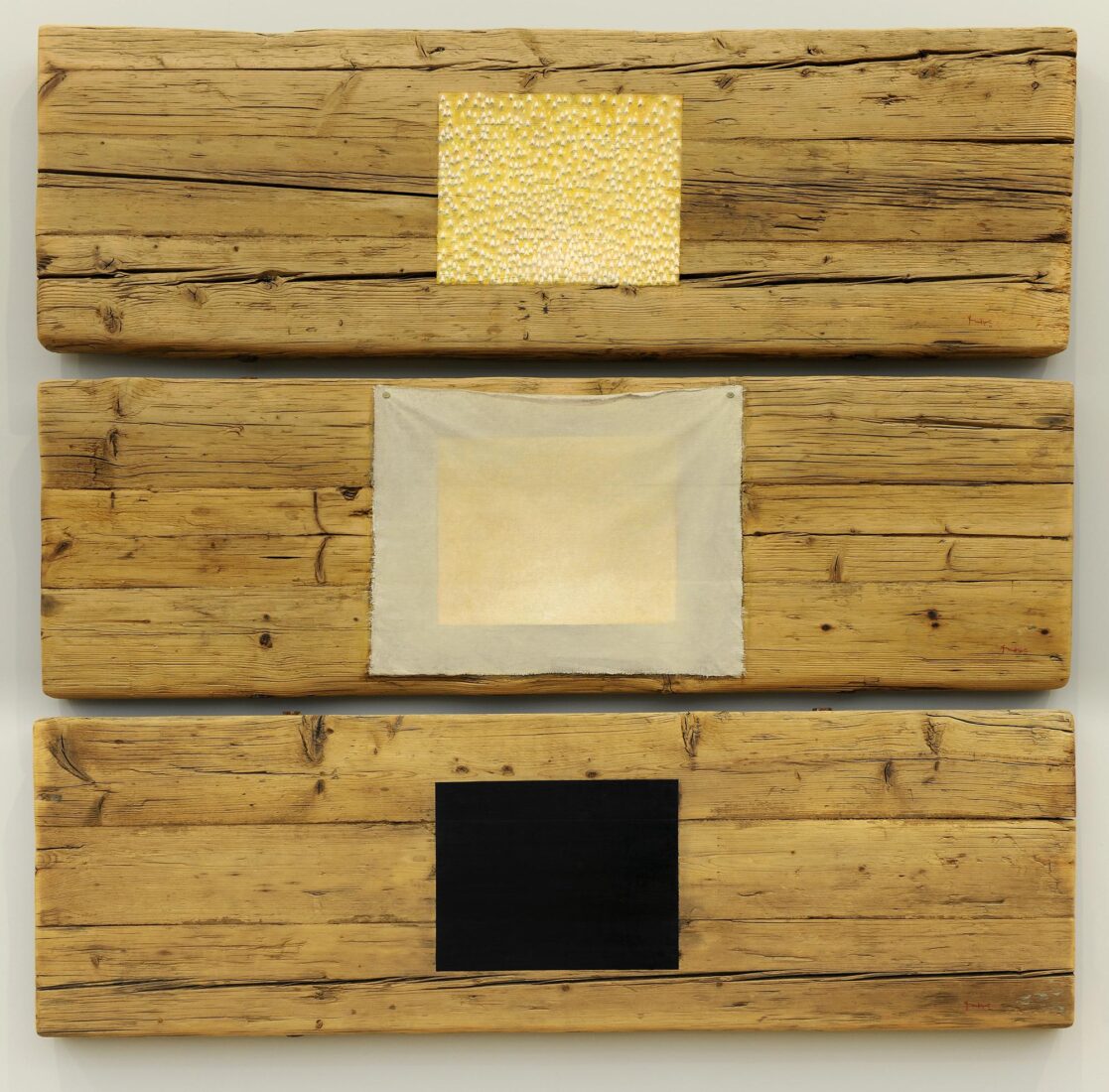We use cookies to make our site work properly, to personalize content and ads, to provide social media features and to analyze our traffic. We also share information about how you use our site with our social media, advertising and analytics partners. Read the Cookies Policy.

The Enigma of Parrhasius (triptych): 1. Floodlit Square, 2. The Curtain, 3. Black Square, 2000
Mixed media, 150 x 129 x 7 cm
Christos Bokoros is one of a group of younger artists who returned to figurative painting, but with a renewed eye, in pursuit of a new meaning in the image. Bokoros is an explorer of memory. He is excited and moved by the traces that human life leaves behind – its labors, its pain, its joy and its hope. The life that has departed leaves behind anonymous imprints that the artist extracts from obscurity and silence to gives them new meaning. The materials he uses in his work bear the obvious signs of use and age: wood recovered from submerged slips, old boats, tables, rusted remains of vessels hallowed in human hands. On these materials, as on an altar, Bokoros reverently deposits his image. It is telling that the flame is the iconic image of his practice: a flame of a candle, a flame of a lamp, a humble flame symbolizing memory. It is the perpetual flame that burns before icons, the candle lit on Greek Orthodox Easter, the promise of eternity that exorcizes corruption.
The Enigma of Parrhasius is an allegory. It narrates a story of painting, the adventure of form from Antiquity to contemporary art: the stormy seas it has weathered, the questioning it has undergone, and the painter’s faith in is endurance and survival.
The narrative unfolds in a triptych. Three horizontal weathered wooden boards, salvaged from an old bridge, are placed parallel to each other, ready, after suitable preparation, to receive the painted image. The first panel depicts a black square: a reference to the famous painting by Russian artist Casimir Malevich. At the time when this, the quintessential minimalist work of Suprematism was made in 1915, philosophers and critics rushed to pronounce the death of painting. The second panel leads us to a well-known incident told by Pliny the Younger (1st century AD), recounting two famous painters of classical antiquity who lived in the time of Socrates. Zeuxis and Parrhasius were competing, as was the custom in those days, for the honor of most perfect painter. This was the age dominated by the notion that imitation and perfection equaled verisimilitude. Zeuxis painted a basket of grapes so vivid that the birds were fooled and began pecking at it. Parrhasius chose to paint in a very illusionary manner a drape that supposedly covered his painting. When Zeuxis ordered him to remove the drape to unveil what he’d painted, Parrhasius replied triumphantly, “You succeeded in fooling the birds, but I have tricked the great painter Zeuxis. Therefore I deserve the title of victor.
In the second panel of the triptych, Bokoros has painted a piece of cloth on the square with such skill that it appears real. But behind in glimmers an imperceptible light. In the third panel the cloth has been removed to reveal a square field flowering with little flames. The message of the piece is clear: painting as it travels through time it can weather storms and be questioned, but in the end it always emerges the victor.

